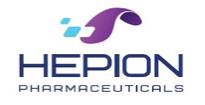and in-house genomic and multi-omic big data, processed via machine learning algorithms. AI outputs allow for improved response outcomes through enhanced patient selection, biomarker selection and drug target selection. We believe AI outputs will help identify responders a priori and reduce the need for large sample sizes through study design enrichment.
We intend to use AI-POWR™ to help identify which patients will best respond to CRV431 for treatment of NASH patients, currently in a Phase 2a clinical trial. It is anticipated that applying this proprietary platform to our drug development program will ultimately save time, resources and money. In so doing, we believe that AI-POWR™ is a risk-mitigation strategy that should reap benefits all the way through from clinical trials to commercialization.
We believe that NASH is a very heterogenous disease and we need to have a better understanding of interactions between changes to proteins, genes, lipids, and metabolites, to name a few, induced by both drugs and disease. All of this is further complicated by variable drug concentrations, patient traits and temporal factors. AI-POWR™ is designed to address many of these typical challenges, as we believe we can use our proprietary platform to shorten development timelines and increase the delta between placebo and treatment groups. AI-POWR™ will be used to drive our ongoing Phase 2a NASH program and identify additional potential indications for CRV431 to expand our footprint in the cyclophilin inhibition therapeutic space.
FINANCIAL OPERATIONS OVERVIEW
From inception through September 30, 2020, we have an accumulated deficit of $99.1 million and we have not generated any revenue from operations. We expect to incur additional losses to perform further research and development activities and do not currently have any commercial biopharmaceutical products. We do not expect to have such for several years, if at all.
On February 12, 2020, we entered into an At Market Issuance Sales Agreement (the “Sales Agreement”) with B. Riley FBR, Inc., as agent (“B. Riley FBR”), pursuant to which we may offer and sell, from time to time, through B. Riley FBR, shares of our common stock, par value $0.0001 per share (the “Common Stock”), having an aggregate offering price of up to $7,000,000 (the “Shares”).
The offer and sale of the Shares will be made pursuant to a shelf registration statement on Form S-3 and the related prospectus (File No. 333-229534) filed by us with the Securities and Exchange Commission (the “SEC”) on February 6, 2019, as amended on February 13, 2019, and declared effective by the SEC on February 19, 2019, as supplemented by a prospectus supplement dated February 12, 2020 and filed with the SEC pursuant to Rule 424(b) under the Securities Act of 1933, as amended (the “Securities Act”). Also, on March 27, 2020, we filed a prospectus supplement to the Form S-3 (File No. 333-229534) pursuant to which we may offer and sell an additional $4.6 million.
As of September 30, 2020, under the Sales Agreement we sold 5,264,806 shares of our common stock resulting in net proceeds of $11.2 million from the “at the market offerings”
Pursuant to the Sales Agreement, B. Riley FBR may sell the Shares by any method permitted by law deemed to be an “at the market offering” as defined in Rule 415 of the Securities Act, including sales made by means of ordinary brokers’ transactions, including on The Nasdaq Capital Market, at market prices or as otherwise agreed with B. Riley FBR. B. Riley FBR will use commercially reasonable efforts consistent with its normal trading and sales practices to sell the Shares from time to time, based upon instructions from us, including any price or size limits or other customary parameters or conditions we may impose.
Our product development efforts are in their early stages and we cannot make estimates of the costs or the time they will take to complete. The risk of completion of any program is high because of the many uncertainties involved in bringing new drugs to market including the long duration of clinical testing, the specific performance of proposed products under stringent clinical trial protocols, the extended regulatory approval and review cycles, our ability to raise additional capital, the nature and timing of research and development expenses and competing technologies being developed by organizations with significantly greater resources.
CRITICAL ACCOUNTING POLICIES
Our condensed consolidated financial statements are prepared in accordance with accounting principles generally accepted in the United States (U.S. GAAP). The preparation of these condensed consolidated financial statements requires us to make estimates and assumptions that affect the reported amounts of assets, liabilities, costs and
